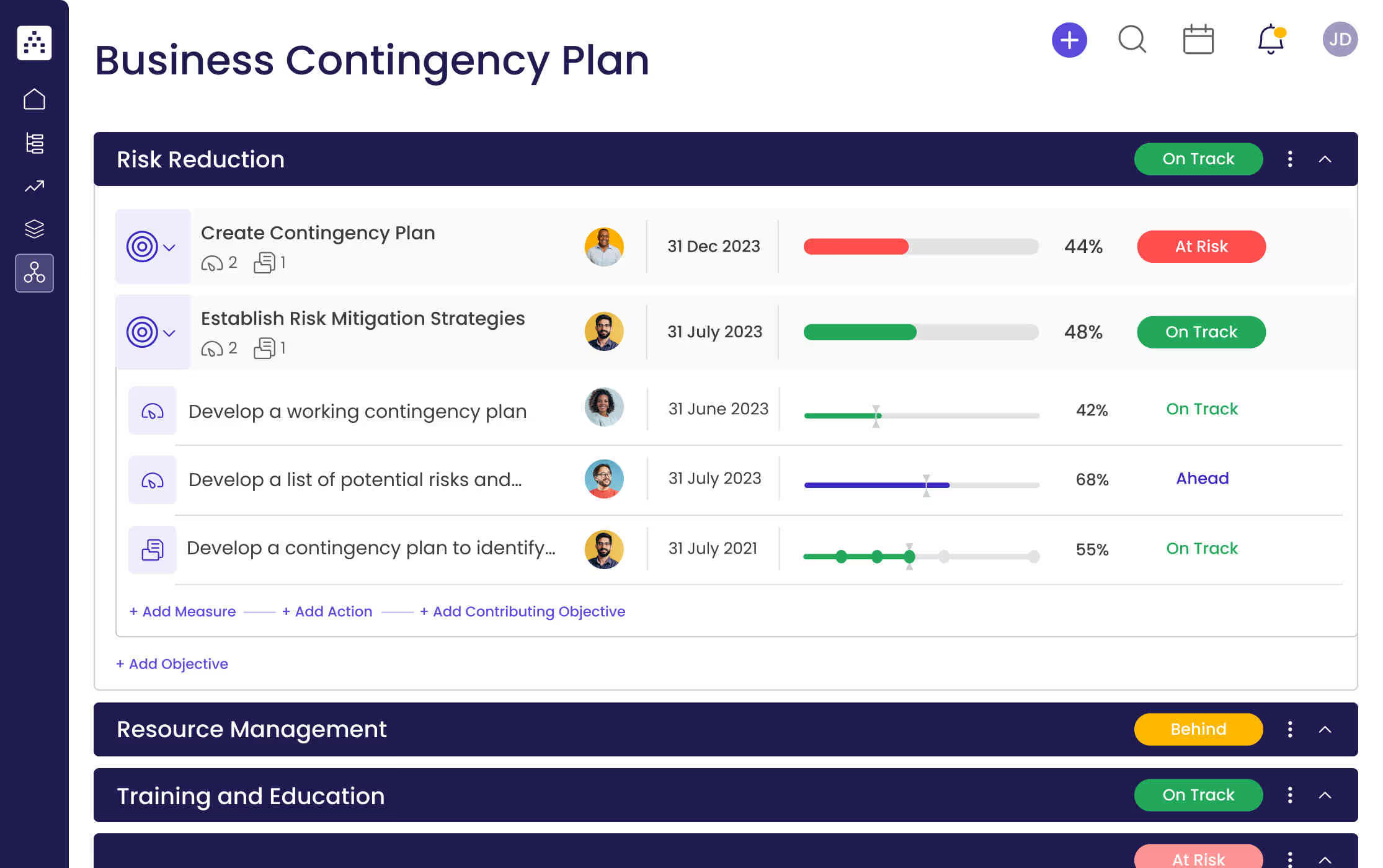What is a Business Contingency Plan?
A business contingency plan outlines the steps and procedures a business should take in the event of an unexpected disruption or disaster. The plan provides detailed guidance on how to respond to an event, initiate recovery operations, and resume business operations. The plan should cover all areas of the business, including operations, personnel, resources, and technology.
What's included in this Business Contingency Plan template?
- 3 focus areas
- 6 objectives
- 6 projects
- 6 KPIs
Each focus area has its own objectives, projects, and KPIs to ensure that the strategy is comprehensive and effective.
Who is the Business Contingency Plan template for?
This Business Contingency Plan template is designed for executives, managers, and teams in any industry to plan and prepare for unexpected events and contingencies. The template provides a framework for developing a comprehensive plan that can be used to mitigate the effects of a disruption or disaster.
1. Define clear examples of your focus areas
Focus areas are the overarching themes of the strategy that will be addressed. Examples of focus areas in a business contingency plan could include risk reduction, resource management, and training and education. Each focus area should have specific objectives and related projects that will help to achieve the desired outcomes.
2. Think about the objectives that could fall under that focus area
Objectives are the goals that will be achieved within a focus area. For each focus area, objectives should be identified that are measurable and achievable. Objectives could include establishing contingency plans, creating risk mitigation strategies, monitoring resources, and providing training and education.
3. Set measurable targets (KPIs) to tackle the objective
Key Performance Indicators (KPIs) are the metrics used to measure progress towards the objectives. For each objective, KPIs should be defined that are measurable and achievable. KPIs should be set for each focus area and objective, and should include an initial value, a target value, and a unit of measure.
An example of a KPI for the focus area of Risk Reduction could be: Develop a working contingency plan.
4. Implement related projects to achieve the KPIs
Projects (or actions) are the initiatives that will be undertaken to achieve the objectives. For each focus area and objective, projects should be identified that are related to the goal and will help to achieve the desired outcomes. Projects should be detailed and include a timeline and resources that will be required.
An example of a project related to Risk Reduction could be: Develop a contingency plan to identify potential risks and develop strategies to mitigate them.
5. Utilize Cascade Strategy Execution Platform to see faster results from your strategy
The Cascade Strategy Execution Platform enables organizations to quickly plan, execute, and measure their strategies. The platform provides an easy-to-use interface, powerful analytics, and real-time updates that make it easy to track progress towards objectives and ensure strategies are on track.


